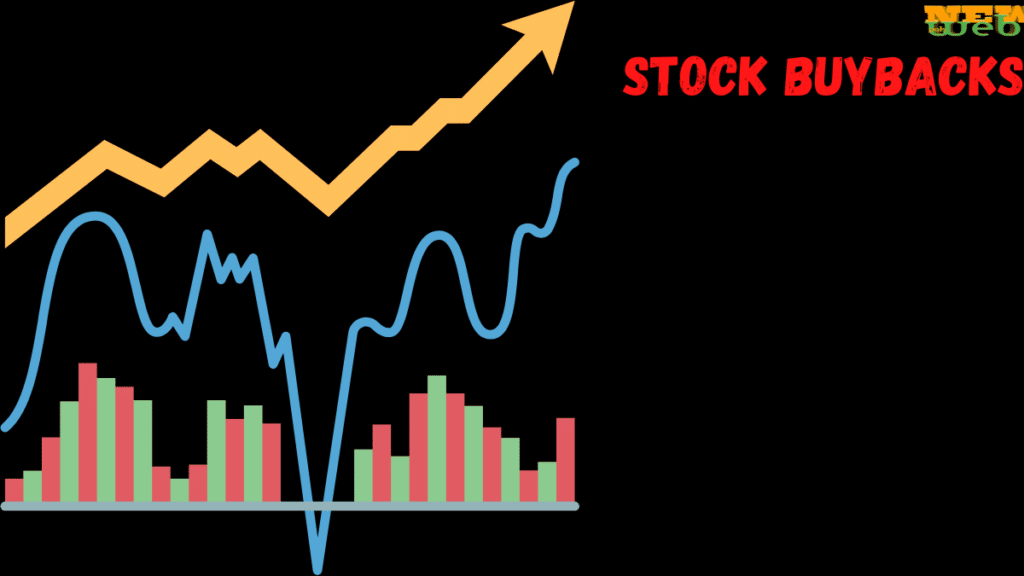When a company buys back its stock, it pays shareholders the current market price per share and re-acquires that part of its own that it had given to public and private investors.
When a company buys back its stock, it can do so on the open market or directly from its shareholders. In the last few decades, buying back shares has become the most popular way to give cash back to shareholders.

Even though smaller companies may choose to exercise buybacks, blue-chip companies are much more likely to do so because of the costs involved.
ALSO READ: Best Student Loans For USA students as of 2022
Why stock buybacks happen
Since companies get equity capital by selling common and preferred shares, it may seem strange that a business would give that money back. But there are a few reasons why it might be good for a company to buy back its shares. These include lowering the cost of capital, reducing the number of owners, keeping stock prices stable, preventing undervaluation, and improving critical financial ratios.
Costs go down when stock is repurchased.
Each share of common stock gives the owner a small piece of the company that issued it. It also gives the owner the right to vote on the company’s policies and finances.
If a business has one owner in charge and one million shareholders, it has 1,000,001 owners. Companies sell shares to raise equity capital to pay for growth, but if there’s no chance of growth, keeping all that unused equity capital means sharing ownership for no good reason.
Many shareholders want dividends on their investments, a cost of equity. This means the business is paying for the right-to-use money it isn’t using. So, buying back some or all of the shares that are still out there can be an easy way to pay off investors and lower the cost of capital overall.
Because of this, Walt Disney (DIS) bought back 73.8 million shares worth $7.5 billion in 2016 to reduce the number of shares it had on the market.
Stock buybacks make ownership more concentrated.
Shares are a way for companies to raise money for projects. Different shares can be given out, but familiar and preferred shares are the most common. Common shares, also called “ordinary” shares, give you ownership and the right to vote. Preferred shares are different because dividends are paid to the owners of these shares before dividends are paid to common shareholders. Also, when a company goes bankrupt, these shareholders are paid first.
A company that has given out thousands of shares of stock has, in effect, thousands of voting owners. A buyback cuts down on the number of owners, voters, and people who have a right to capital.
Stock Buybacks Keep the stock price stable.
Most shareholders want a steady stream of dividends that keep going up from the company.
And one goal of company executives is to ensure shareholders have the most money possible. But if the economy goes into recession, company leaders must find a way to please shareholders while staying flexible.
Why do some favor buybacks over dividends? If the economy slows down or goes into recession, a company may have to cut its dividends to save money.
The stock would almost certainly go down in price as a result. But if the bank decided to buy back fewer shares, which would have the same effect on keeping capital as cutting the dividend, the stock price would probably take less of a hit.
A company’s stock will go up if it promises to pay dividends that keep going up, but the dividend strategy can be a double-edged sword. In a recession, it would be easier to cut share buybacks than dividends, which would hurt the stock price much less.
ALSO READ: Property Insurance – What is Property Insurance and How Does it work?
REASONS OF STOCK BUBACKS
The stock is too cheap.
Another big reason companies do buybacks is that they think their shares are worth less than they should be.
Undervaluation can happen for several reasons, but it usually happens because investors can’t see past a company’s short-term performance, sensational news stories, or a generally bearish mood. For example, in 2010 and 2011, when the economy was still recovering from the Great Recession, a wave of stock buybacks hit the United States.
Many companies started to make optimistic predictions for the next few years, but the prices of their stocks still showed that the economy was still in the wrong spot. These companies put money back into themselves by buying back shares, hoping to make money when share prices finally started to reflect the new, better economy.
If a stock is drastically undervalued, the company that issued it can buy back some of its shares at this lower price and then re-issue them once the market has stabilized. This increases the company’s equity capital without issuing more shares. But investors may not want to buy the re-issued shares if they feel like they’ve been taken advantage of in this way by a company.
Stock buybacks change the financial statements.
Buying back stock is another easy way to make a business look more appealing to investors. A company’s earnings per share (EPS) ratio goes up automatically when the number of outstanding shares goes down. This is because the company’s annual earnings are now divided by a smaller number of outstanding shares.
For example, a company with 100,000 outstanding shares and a yearly profit of $10 million has an EPS of $100. But if it buys back 10,000 of those shares, bringing the total number of outstanding shares down to 90,000, its EPS goes up to $111.11 without the company making more money.
ALSO READ: Permanent life insurance – How it works? Complete Guide
